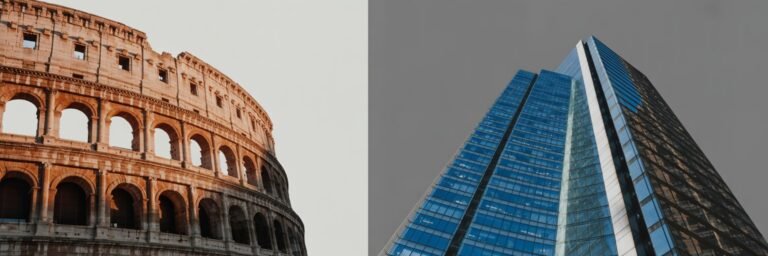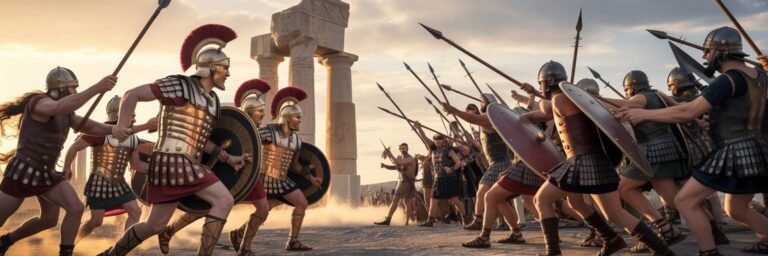INTRODUCTION
Peering into the kaleidoscope of history, we are humbled by the sheer ingenuity and grandeur of countless civilizations, tracing back millennia. Humanity’s ceaseless quest for creation and spectacle across epochs has birthed both Ancient Wonders and the marvels we admire today. Each era, capturing its distinct zeitgeist, contrasts starkly from the other, yet are undeniably connected, fostering a fascinating comparison between Ancient Wonders and our Modern Society. This comprehensive examination probes this intriguing relationship, illuminating its profound complexities and intriguing connections.
HISTORICAL BACKGROUND
The Ancient Wonders, also known as the Seven Wonders of the World, were masterpieces of architecture and engineering, notably the Great Pyramids of Egypt, the Hanging Gardens of Babylon, the Mausoleum at Halicarnassus, the Statue of Zeus at Olympia, the Temple of Artemis at Ephesus, the Colossus of Rhodes, and the Lighthouse of Alexandria. These monoliths, erected between 2600 BC and 280 BC, encapsulated their era’s technological prowess and artistic ability.
Contrastingly, our contemporary society teems with the intricacies of technological advancements and human imagination pervading every corner, from the towering cityscapes to advanced robotics. The Dubai’s Burj Khalifa, the CERN Hadron Collider, and the International Space Station are merely a few instances of our era’s wonders.
THEORIES AND INTERPRETATIONS
Several theories and interpretations surround both the Ancient Wonders and todays modern marvels. For instance, the construction of the Great Pyramid of Giza incited widespread speculation. Historians like Herodotus postulated that a troop of 100,000 slaves toiled incessantly through a twenty-year period, Yet, discoveries by archaeologist Mark Lehner contest this, suggesting a skilled workforce far lower than Herodotus’ claim.
Likewise, modern day marvels also intrigue academics. The engineering feat of the Burj Khalifa, towering above Dubai at 828 meters, defies conventional construction methods, sparking debate amongst architects and engineers. While some theorists posit advanced construction techniques, others marvel at its sheer verticality, a feat only achievable through advancements in steel and concrete technology.
MYSTERIES AND CONTROVERSIES
Throughout history, controversies abound. The Hanging Gardens of Babylon, an Ancient Wonder, its location remains unknown, and there are debate if it ever existed. Yet, accounts from ancient scribes such as Strabo and Philo of Byzantium persist in our history.
Modern society is not devoid of controversies either. The Large Hadron Collider, an engineering marvel, sparked fears of creating black holes or anti-matter that could potentially engulf Earth. Distinguished scientists, like Stephen Hawking, declared these theories as unfounded, though they continue to thrive in public imagination.
SYMBOLISM AND CULTURAL SIGNIFICANCE
Each Ancient Wonder held significant cultural and symbolic importance, both as a testament to human ingenuity and a symbol of divine admiration or royal mettle. For instance, the Statue of Zeus at Olympia, while reflecting excellence in sculpture, also firmly established the cultural dominance and religious grandeur of Olympia.
Modern marvels are equally symbolic. Satellites floating in space, e.g., the Hubble Space Telescope, signify humanity’s innate curiosity and unparalleled ambition to explore the cosmos. These have reoriented our understanding of Earth’s position in the universe and reassigned cultural value to space exploration.
MODERN INVESTIGATIONS
Modern investigations excavate hidden truths about Ancient Wonders and our current world. Today’s archaeologists have discovered that the Egyptian Pyramids were built by a workforce of 10,000 and not by boundless slave labor, discrediting previous theories.
Modern society also continually scrutinizes its creations. For example, the social and environmental impacts of the towering skyscrapers representing urban progress, like the Burj Khalifa, are managerial challenges worth investigating.
LEGACY AND CONCLUSION
The Ancient Wonders, resilient or in ruins, have indelibly imprinted themselves onto the canvas of human history. These constructs continue to captivate, educate, and inspire.
Similarly, the wonders of our modern world, from towering skyscrapers to artifacts orbiting earth, shape our societal narrative. These spectacles continue to redefine the boundaries of human achievement and stand as testaments to our collective ambition.
In this comparison between Ancient Wonders and Modern Society, we witness not only the contrast of times and technologies but the undying human spirit that fuels progress and innovation. To appreciate these marvels is to appreciate our history; our shared story of curiosity, resilience, and the ceaseless endeavor to reach beyond our grasp. The celebration of these wonders, both old and new, is indeed a celebration of humanity itself.






